#コンクリート造
Photo
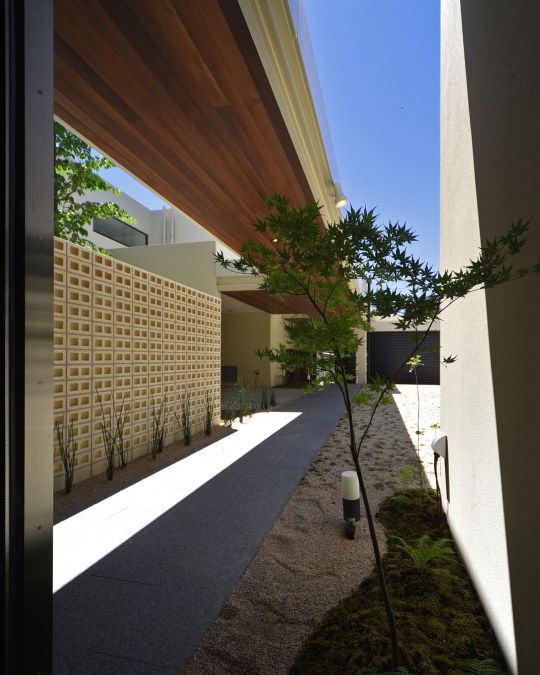
スレッドデザインが、設計監理をさせていただいたコンクリート造の二世帯住宅の事例です。 Thread design studio :Uni-house Photo:アーキフォトKATO #コンクリート造の住宅 #二世帯住宅 #ビルトインガレージのある家 #板張りの軒天井 #車寄せのある家 #バリアフリー #コンクリート造 #玄関アプローチ #二世帯住宅 #長いアプローチ屋根 #玄関まで濡れずにアクセス https://www.instagram.com/p/Ch3MwpSvwAz/?igshid=NGJjMDIxMWI=
3 notes
·
View notes
Photo

遠方に建物見学へ。続 目線より下の灯は、グッと落ち着きます 写真では分かりにくいですか 台の上にある枕元用コンセントは、 目立たないようプレートを左官で 押さえて仕上げています @makina_nakijin #左官壁 #経年変化を楽しむ #経年美化 #コンクリート造 #ミニマルデザイン #枕元灯 #コンセントプレート #四角い家 #四角い箱 #暮らしの工夫 #設計アイデア #沖縄ホテル #okinawahotels #okinawa #hotels https://www.instagram.com/p/CjaUOh2Lmxq/?igshid=NGJjMDIxMWI=
#左官壁#経年変化を楽しむ#経年美化#コンクリート造#ミニマルデザイン#枕元灯#コンセントプレート#四角い家#四角い箱#暮らしの工夫#設計アイデア#沖縄ホテル#okinawahotels#okinawa#hotels
0 notes
Text
【賃貸マンション】エテラ・クッカ古波蔵 702号
漫湖公園近く最上階2LDKのペット可物件に空きが出ました!アクセス良好・モノレール壺川駅まで徒歩7分の好立地!設備も充実でネット無料のお部屋は必見です!
家賃 8.5万円
共益費 4,000円
敷金/礼金 1ヶ月/1ヶ月
仲介手数料 9.35万円
保証金 ナシ
間取り 2LDK ( 洋6 洋6 LDK13)
所在階/階数 6階 (6階建)
ペット 可 ※犬、猫等合計2匹まで
駐車場 ナシ
入居者総合保険:12,800円、ペット保証金:33,000円(ペット飼育の場合)
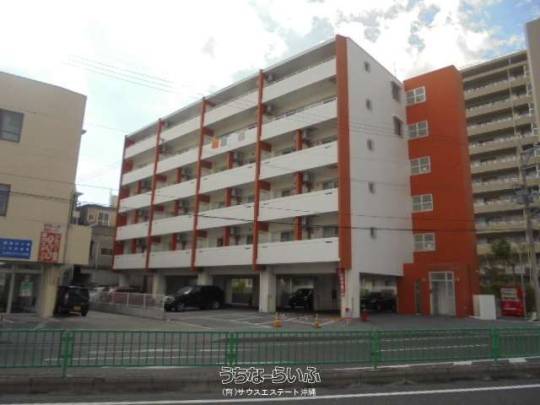
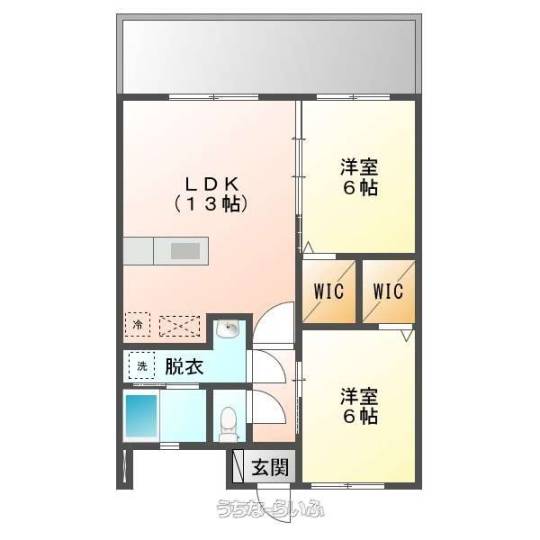
有限会社スタプランニング
TEL 098-855-0655 赤嶺まで… ♪
お気軽にお問い合わせ下さい。・・・(^_-)-☆
2 notes
·
View notes
Text
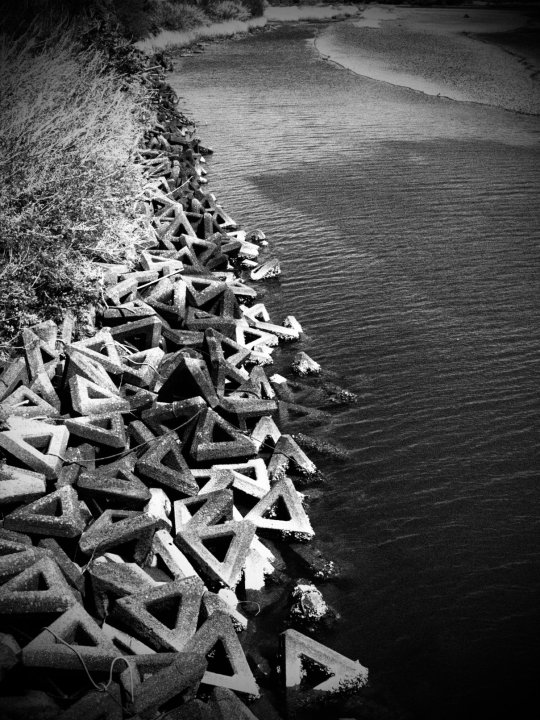
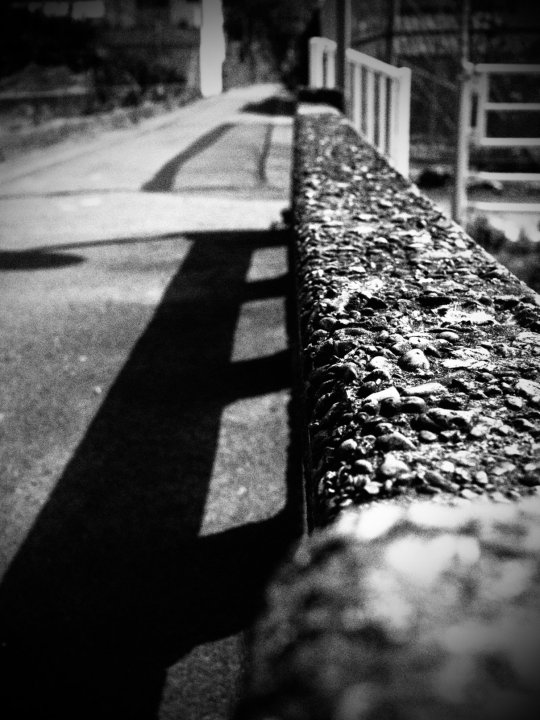
コンクリート構造物
Concrete structure.
Apr.2022
OLYMPUS E-PL3
M.ZUIKO DIGITAL 25mm F1.8
1 note
·
View note
Photo
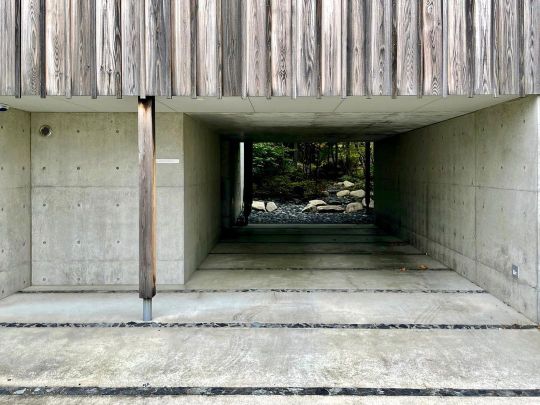
#住宅 #アプローチ #鉄筋コンクリート造 #木造 #中庭 #ランドスケープ #ランドスケープデザイン #外構 #外構デザイン #建築 #建築デザイン #新潟 #設計 #設計事務所 #デザイン #デザインルームアマノ #天野一博 #栗田工務店 #architect #architecture #landscape #landscapedesign #housedesign #gardendesign #kazuhiroamano #design #designroomamano #dra #niigata (Niigata-City Japan) https://www.instagram.com/p/CnczeIeBjom/?igshid=NGJjMDIxMWI=
#住宅#アプローチ#鉄筋コンクリート造#木造#中庭#ランドスケープ#ランドスケープデザイン#外構#外構デザイン#建築#建築デザイン#新潟#設計#設計事務所#デザイン#デザインルームアマノ#天野一博#栗田工務店#architect#architecture#landscape#landscapedesign#housedesign#gardendesign#kazuhiroamano#design#designroomamano#dra#niigata
0 notes
Photo

おはようございます。 梅雨明けしてから連日本格的な梅雨のような天気ですね(笑) 和田の家|愛知県江南市 長い土地探しの期間を経てようやく見つけた市街化調整区域内にある既存宅地の広い土地。 そこにクライアントが求めたのは骨太な和の家でした。 #平屋 #切妻屋根 #左官塗り壁 #和の家 #コンクリート打放し #自転車置き場 #門壁 #造園 #石畳 #植栽 #庭アトリエ #江南市 #青木昌則建築研究所 https://www.instagram.com/p/Cfm4rPnPTWK/?igshid=NGJjMDIxMWI=
1 note
·
View note
Text
洗濯置場もおしゃれに演出

View On WordPress
0 notes
Text
no, miss appleton did not single-handedly ruin japanese soy sauce forever
there's a popular post going around this week about a ghq (general headquarters, the administration of the american occupation of japan after wwii) employee, a certain ms. blanche appleton, single-handedly changing the taste of soy sauce. while her story is fascinating for sure and i await further developments on the part of the op, and had a hand in the history of soy sauce, the premise is quite a bit exaggerated, and the general narrative so far in the framing by the op somewhat problematic.
tl;dr: as with most things, this is a confluence of factors, with producers, scientists, politicians, (possibly underworld,) and administrators all having their own agency in this story. i find it unusual to sideline so many parties in favour of presenting a single foreign administrator calling the shots in the op's posts.
i've made an initial response here. i will continue my findings in a separate post here.
1. jack daniel's is swill, but it's still whiskey
i think i can distill my issues with this plot so far down to one statement in the original post:
There should be records of her policies, there should be legal documents in America which record how she apportioned out American exportation of soy beans to Japan, there should be sources talking about this woman's ability to transform Japan's soy sauce production so heavily that today only 1% of all soy sauce is made with pre-WW2 traditional techniques.
this transformative impact of one administrator is entirely overstated. this comment led me to a promo blog post where some of the original claims can be seen, and the op mentions that traditional soy sauce was made in kioke barrels, and the this method of production has dropped to about 1% now. this is true, but it appears that at least one source put the decline as starting around the end of the edo period (xvii-xix centuries). [1] sources traceable to yamaroku puts the decline more recently, at about a century ago [2, 3]
this japanese paper on fermented food production is quite clear in stating that wodden barrel production declined from the meiji period (1868-1912) onward.
江戸時代までに一般化した木桶・木樽の使用形態は、明治期以降、一般の生活や各種製造現場で近代化が進む中、コンクリートや金属、プラスチック、合成樹脂等の材質によって代替されていく。
The use of wooden vats and barrels, which had become common by the Edo period, was replaced by materials such as concrete, metal, plastic, and synthetic resin from the Meiji period onward, as modernization progressed in ordinary life and various manufacturing sites. (deepL translation)
another source from a professor on food production in japan suggests that shodoshima (where yamaroku is made) is the area that has most completely preserved the wooden vat method of production.
this survey (oguri) written by a member of the national museum of nature of science in tokyo dates the supplanting of traditional method in more industrialized regions by 1913
1913(大正2)年:栂野は「最新醤油醸造論」の中で、九州、中国地方では桶の代わりに煉瓦又は石でタンクを作り使用していると記述。
1913 (Taishō 2): Tsugano, in his "The Latest Soy Sauce Brewing Theory," wrote that in Kyushu and Chugoku regions, instead of vats, tanks were made of bricks or stone and used. (deepL translation, p.148)
1918年:西二の蔵(ヤマサ印)の建設に当たり研究中の内面塗料が完成したので、これを採用し仕込桶を角型のコンクリートタンクに改めた。
1918: The internal [coating] that was being researched for the construction of the Nishi Ni no Kura (Yamasa brand) was completed, and this was adopted and the brewing vats were replaced with square concrete tanks. (deepL translation with edits from @literaryreference, see translator's note 3, p.148)
i think it bears repetition that soy sauce production was industrializing as japan was industrializing from the meiji to early shōwa periods. as alluded to in the title, a lot of modern soy sauce is like jack daniels: industrial products that evolved from traditional methods alongside a nation's overall development.
2. babe wake up, a new semichemical soy sauce just dropped, and appleton's role in history (a corroboration of @/inneskeeper)
it seems like the plot on the original poster's part has gone to the american side, so let's try to follow the us-japan interaction but from japanese sources.
the survey cited earlier (oguri) has a lot of information that supports the original post. blanche appleton did exist, and does appear in more anecdotes from that era of the soy sauce industry.
(also, this bibliography has more sources on her time in japan, will require institutional access to japanese universities)
to start, there are two methods of semichemical soy sauce production. the first, 新式1号法 shinshiki 1-gō method (i will call it sc1) was invented in the taishō era (1912-26).
大正の末期頃になると、酸やアルカリの化学薬品を併用することによって、速醸の目的を達成しようとする研究が盛んに行われ、その代表的な「新式1号」が出現する。
Toward the end of the Taisho era, there was a flurry of research into the use of acid and alkali chemicals in combination to achieve the goal of fast brewing, and the "Shinshiki No. 1" [sc1] appeared as a representative example of such research. (deepL translation, p.158)
in the time immediately after the war, there was a shortage of supplies, and its allocation was controlled by the americans
駐留軍の総司令部 GHQ(General Head Quarter)は、1948年の春調味料の原料として「エロア資金」(占領地域経済復興資金)により、大豆ミール2万tを放出する方針を打ち出した。このことにより、その配分をめぐって醤油業界とアミノ酸業界は熾烈な競争をすることとなる。
The General Head Quarter (GHQ) of the stationed army announced a policy of releasing 20,000 tons of soybean meal as a raw material for seasonings in the spring of 1948 through the EROA (Economic Rehabilitation in Occupied Area) Fund. This led to fierce competition between the soy sauce and amino acid industries for its allocation. (deepL translation with edits by myself, p.159)
the "amino acid industry" mentioned refers to the monosodium glutamate (msg) industry (glutamate is the ion of an amino acid). essentially, in the early 20th century, both msg and soy sauce (and chemical "soy sauce") production methods have converged to all requiring many soybeans due to their protein content and fermentation properties.
this is where appleton makes her entrance:
GHQは両業界の調整窓口として、「経済安定本部」の経済科学局で調味料と乳製品の需給を担当していたミセス・ブランシェ・アップルトンをその任にあてた。アップルトンは、醤油醸造協会の茂木啓三郎とアミノ酸業界の大内鋼太郎を招いて意見を聴取し、原料の配分を「醸造醤油2、アミノ酸業界8」とすることを内定し、上司のマーカット局長に報告した。この報告内容は醸造醤油にとっては死活問題であったが、内定の根拠は次のようなものであった。
GHQ assigned Ms. Blanche Appleton, who was in charge of the supply and demand of seasonings and dairy products in the Economic and Science Section of the "Economic Stability Headquarters," (?) to serve as the coordinating contact between the two industries. Appleton invited Keizaburo Mogi of the Soy Sauce Brewers Association and Kotaro Ouchi of the amino acid industry to hear their opinions, and informally decided that the distribution of raw materials would be two for brewing soy sauce and eight for the amino acid industry, and reported this to her boss, Maj. Gen. W. F. Marquat. The content of this report was a matter of life and death for brewers' soy sauce, but the rationale for the informal decision was as follows. [...] (deepL translation with edits by myself p.159)
essentially, appleton originally intended for only 20% of the soybean meal to be handed out for soy sauce due to its relatively inefficient usage of materials compared to msg production. this would've crippled the existing soy sauce producers, and they set out to find solutions to save their industry.
醸造醤油側は、醸造醤油の「日本人の食生活における重要性や醸造醤油そのものの品質の良さ」等を強調したが、GHQはただ「脱脂大豆が有効に活用されるのはどちらか」という尺度だけで判断したのである。このような醸造醤油の存亡の危機を救ったのは、もくもくと研究に携わっていた技術陣が開発した「新式2号法」であった。本法を発明したのはキッコーマンの館野正淳、梅田勇雄等である。新式2号の製法は新式1号と同様に、蛋白質を弱酸でペプトンやペプチド程度まで分解し、その後は麹の酵素により分解してアミノ酸の形態まで持っていく半化学、半醸造による醤油の製造法である。
The brewing soy sauce side emphasized the importance of brewing soy sauce in the Japanese diet and the quality of the soy sauce itself, but GHQ made its decision based solely on the basis of "which [industry] would use the defatted soybeans more effectively". What saved brewed soy sauce from the brink of extinction was the "New Formula No. 2 method" developed by the technical staff who had been working diligently on the research. The inventors of this method were Masajun Tateno and Isao Umeda of Kikkoman Corporation. As with Shin-Shiki No. 1 [sc1], the Shin-Shiki No. 2 [sc2] method is a semi-chemical, semi-brewing method for producing soy sauce in which proteins are broken down to peptones and peptides with weak acids, and then decomposed by enzymes from koji mold to the form of amino acids. (deepL translation with edits by myself and @literaryreference, see translator's note 4, p.159)
this development, the invention of the 新式2号法 shinshiki 2-gō method (sc2), led to another round of discussions:
ミセス・アップルトンは「キッコーマンが画期的な技術を開発した」ことを聞き、新法による醤油とアミノ酸液による化学醤油を消費者に提示し、その調査結果に基づいて決定を再考しようと上申書を提出した。醤油の 味、使用テストは神奈川県の鎌倉市と逗子で行われたが、消費者の8割が新法による醤油を支持した。この結果に基づき、アップルトンは両業界で話し合って結論を出すように「正田・大内会談」を開かせた。
Mrs. Appleton heard that "Kikkoman had developed a breakthrough technology" and submitted a petition to reconsider her decision based on the results of a survey that presented consumers with both the new method of soy sauce and a chemical soy sauce made with amino acid solution. Taste and use tests of soy sauce were conducted in Kamakura and Zushi, Kanagawa Prefecture, and 80% of consumers supported the new soy sauce. Based on these results, Appleton had the "Shoda-Ouchi Conference" held so that the two industries could discuss and reach a conclusion. (deepL translation, p.160)
this source seems to suggest that the original decision was under higher-ups' pressure:
当初の提案2対8のアミノ酸業界絶対優位の配分比率は、「新式2号法」の出現により、最終的にGHQは「正田・大内会談」の「7対3協定」を認め、ここに醸造醤油の歴史的危機は回避されることとなった。醤油業界のミセス・アップルトンの評価は従来大変厳しいものであったが、後の調査で彼女は醸造醤油の良き理解者であり、当初の配分比率も上司の強い指示に抗しきれず提案したものであったようである。再度の上申は、彼女の日本の伝統的な醸造醤油への深い理解と思い入れによるものであったと考えられる。
As for the proposed allocation of 2 to 8, due to the [sc2] method, GHQ ended up deciding on the “7 to 3 Agreement” from the “Shoda-Ouchi Conference” instead, thus averting the historical crisis of brewed soy sauce.Although the soy sauce industry had been very critical of Mrs. Appleton in the past, later investigations revealed that she was a firm supporter* of brewed soy sauce and that the original allocation ratio was a proposal she made because she could not resist the strong instructions of her superiors. It is believed that her renewed offer was due to her deep understanding of and commitment to the Japanese tradition of brewed soy sauce. (deepL translation with edits from myself and @blackamite, see translators' note 1, p. 160)
the term 良き理解者 "good friend" (see bolded) i think could mean connoisseur or enjoyer here, will need help in clarifying.
その後醤油醸造協会の正田会長は、1948(昭和23)年7月23日に「新式2号法」の特許公開を懇請し、当時の中野社長の決断により、「新式1号」に続いて「新式2号」についても無償で業界に公開されることとなった。同年8月から講習会が全国12ブロックで開催され、約2,500社の業者が技術を習得した。
Later, on July 23, 1948, Mr. Shoda, president of the Soy Sauce Brewers Association, requested that the patent for the [sc2 method] be made public, and following the decision of then [Kikkoman Inc.] President Nakano, the [sc1 and sc2 methods] were made public free of charge to the industry. In August of the same year, training sessions were held in 12 blocks throughout Japan, and approximately 2,500 companies learned the technology. (deepL translation with edits by myself, p.160)
the main sources the survey used are a manuscript, 醤油醸造技術の近代化 by 永瀬一郎 Ichirō Nagase, kikkoman inc.'s own historical record (キッコーマン株式会社八十年史; a shorter version can be found here), and a history of choshi shoyu inc. (銚子醤油株式会社 社史). i think this confirms a lot of information the original post put out there about ms. appleton and her involvement with soy sauce. plus, it shed more light into how exactly she interacted with the condiment industries.
perhaps @/inneskeeper will find some shady dealings in their research; when you mix a foreign military force, the collapse of existing institutions, and social upheaval, you're likely to find corruption. ill keep my eyes peeled for that development.
3. no, kikkoman is not "fake" soy sauce, but you might be able to find some echoes of the past
so what happened to semichemical soy sauce now? the survey document does not track its usage after its invention and at the surface level, it seems that the original claim was right, the semichemical method has persisted since the american occupation and we're all just drinking sussy sauce.
in fact, this seemed so obvious that this rumour circulated in japan and was debunked by aficionados two years ago.
the link to kikkoman's own record earlier states that sc2 sauce was discontinued in 1970, and the japanese blog post above repeats that, adding that it has reverted back to honjōzō (本醸造) sauce. this paper in the journal of the brewing society of japan (日本醸造協会誌) has this to say about what became of sc2 sauce:
また,キッコーマンの新式 2号しょうゆ製造法の特許が公開されたのも 1948年で, しょうゆ業界は混合醸造しょうゆおよび混合しょうゆを製造することにより効率よく旨味の強いしょうゆを安価に製造し, しょうゆ原料不足の時代を乗り切ったと考えている 。現在,大手メーカーでは食の安全性や本物志向から混合醸造しょうゆおよび混合しょうゆの製造をやめ本醸造しょうゆだけを製造している 。一方,全国の中小しょうゆメーカーでは,製造設備を全て本醸造しょうゆに切 り換える資金力に乏しく.一旦,消費者に定着した混合しょうゆのニーズにより本醗造しょうゆに切り換えることが出来ず,現在も混合しょうゆが主力商品となっているのではないかと考えている 。
The patent for Kikkoman's new [sc2] soy sauce manufacturing method was also published in 1948, which allowed the soy sauce industry to overcome the shortage of raw materials for soy sauce by producing mixed brewed soy sauce and mixed soy sauces efficiently and inexpensively. Currently, major soy sauce manufacturers have stopped producing mixed brewed soy sauce and mixed soy sauce, and are producing only honjozo soy sauce, due to food safety and the desire for authenticity. On the other hand, small and medium-sized soy sauce manufacturers nationwide do not have the financial resources to convert all of their production facilities to honjozo soy sauce. Once a demand for mixed soy sauce has taken root among consumers, they are unable to switch over to honjōzō soy sauce, and even now, it's possible mixed [kongō or kongō-jōzō] soy sauce might be the top [soy sauce] product. (deepL translation with edits from myself and @literaryreference, see translator's note 2, p.78)
the three types of japanese soy sauce production methods available today are honjōzō (本醸造, fully fermented), kongō-jōzō (混合醸造, mixed fermented with amino acid added prior to fermentation, closest to sc2 method), and kongō (混合, one of the previous two types with additives). [wiki, academic source] these production methods are in parallel to the traditional varieties of sauce, which rather describe the mash and added taste; these elements of the production, rather than the fermentation process, are usually what define the lineage of the sauce in both japan and other soy sauce-producing cultures.
instead of supplanting "genuine" fermented soy sauce, the industrial descendants of sc2 sauce have become their own type of sauce and have carved their own niches in the consumer market. as someone who is not from japan, i would be careful about making any judgment on whether it is "authentic".
4. clarifications
there were a few statements by the original poster that i think need further context for a more accurate understanding. any bolding and italics are mine.
During World War 2 there was a push to industrialize the Japanese soy sauce industry to be better for mass-production. This innovated the chemical fermentation technique and the semichemical fermentation technique utilized by Kikkoman; rather than ferment for four years in gigantic cedar barrels, kioke, instead fermentation takes place for six months or a year in stainless steel barrels which utilize electrolysis to artificially speed up fermentation processes.
the first part is correct, but the word "rather" introduces a false dichotomy; soy sauce production is very diverse and progresses at different paces in different regions (see part 1 of this post). the sauce op has is simply one from a region that has kept their manufacturing method unchanged.
"four years" is arbitrary: different producers have different fermentation periods.
the last part of the statement is not universally true of industrial production; ac current may be used in brewing.
A single American woman named "Ms Appleton" was given total control of apportioning all American soy bean rations to companies, how much, and to who. She had no knowledge of soy sauce, allegedly.
we can lay that last part to rest. it appears that she does. i will also have to mention that "soy sauce" has been imported from china to the usa since the 30s.
She apparently had so much power over Japanese soy sauce production that she could singlehandedly shape its future by threatening to not give soy beans to any company, family, or factory which did not utilize her specific requirements of semichemical fermentation (reduced from chemical fermentation, since it was that abhorrent). These days, the term soy sauce is distinct from traditional shoyu, and requires distinguishment because of such a radical difference the two products are.
is girlboss applesauce really that powerful on her own? this statement was not wrong, but she did have the military that just nuked japan behind her.
did appleton specify one method over others? probably, but i think the dependency went the other way: the invention of sc2 sauce was the only way the industry could be efficient enough for ghq standards.
that last part is just straight up wrong dawg what the hell
i was nicer in my first reply but im not feeling it today
[...] Because there should be way more information on her if this was the case; she was apparently powerful and influential enough during the occupation that she could singlehandedly enforce whatever arbitrary rules she wanted on the soy sauce industry and they had to comply or else have no product at all. That level of power is fucking insane. Imagine having so much raw influence over Japan that you could order them to completely renovate and change how they produce and make SOY SAUCE, literally one of if not THE most important thing in Japanese culinary history--[...]
holy exaggeration batman, this is almost insulting. as with most things, this is a confluence of factors, with producers, scientists, politicians, (possibly underworld,) and administrators all having their own agency in this story. it is incredibly unusual to sideline so many parties in favour of a single foreign administrator calling the shots.
5. what now?
i think there's much to be found out about appleton's dealings, and it would be an interesting story if there did end up being underworld dealings in those negotiations coming to light. i think it is a fascinating slice into that era and how society and institutions interacted in such a fraught situation. overall, i encourage @/inneskeeper's historian work.
that said, it is very important for people to not put a narrative ahead of the facts. i think it is human nature to be attracted to stories that have a clear causality and linearity, but it is something we need to be very careful about when communicating history to a large audience. to anyone who would like to present their findings, consider what your framing of events imply about the state of the time and place you research, and if you are doing all parties justice.
and for the love of god, cite your sources.
if there are any translation issues, please reach out to me and i will edit accordingly and post errata.
erratum 1: jack daniel's is tennesee whiskey, not bourbon, thanks @drdementogrl.
translators' note 1: 良き理解者 could also be translated more literally to “good understander,” thank you @blackamite, @monstrousgourmandizingcats, @leatherbookmark, and others who have given similar notes.
erratum 2 and translator's note 2: @literaryreference has indicated that 一旦,消費者に定着した混合しょうゆのニーズにより本醗造しょうゆに切り換えることが出来ず,現在も混合しょうゆが主力商品となっているのではないかと考えている 。 is more equivocal and did not state an outright larger popularity for kongō/kongō-jōzō type brewing, so it's possible it might be the top product. they also suggested removing redundancies and pointed out a copying mistake from the original source (left out a bit of the japanese text).
translator's note 3: @literaryreference let me know that 塗料 would more accurately be interpreted as "coating" and also gave me a link of the sauce brand mentioned.
translator's note 4: @literaryreference has provided a better translation for GHQはただ「脱脂大豆が有効に活用されるのはどちらか」という尺度だけで判断したのである, and i have made edits from their translation as well for better context.
4K notes
·
View notes
Text

【かいわいの時】慶長十一年(1606)十二月十三日:秀頼、生国魂神社を再建(大阪市史編纂所)
家康は、豊臣家の財力を失わせるため、故太閤秀吉の菩提をとむらうためなどと称し、秀頼に対して、さかんに寺社の造営・修復を勧めた(略)当時、秀頼が造営・修復した寺社など方広寺大仏殿、誉田八幡宮、四天王寺、東寺金堂、石清水八幡宮、生国魂神社、勝尾寺、中山寺、叡福寺太子堂、観心寺金堂、常光寺庫裏、宇治橋、鞍馬寺��ど(柏原市「玉手山物語」)。※原文ママ
石山本願寺建立の際には、この生国魂神社を隣接地に遷座して建立したとも言われるが、だとするならば石山本願寺は生国魂神社の最初の鎮座地に存在したことになる。また、近年の研究によれば石山本願寺は豊臣期の大阪城の詰之丸に存在したとの説もあるが、これがもし事実ならば、生国魂神社の最初の鎮座地は豊臣期の詰之丸付近に相当する、現在の天守閣周辺ということになる。 戦国時代には、石山本願寺に隣接していたため石山合戦で焼失した。天正11年(1583年)、豊臣秀吉が、大坂城を築城する際に現在地に社地を寄進して社殿を造営し、天正13年(1585年)に遷座した。このときに造営された社殿は、「生国魂造」と呼ばれる、流造の屋根の正面の屋上に千鳥破風、唐破風さらにその上に千鳥破風と3重に破風を乗せるという独特の建築様式のものである(いくたま夏祭りみこし会)。
(写真)『摂津名所図会 巻之三』より「生玉神社 其二」(スミソニアン蔵)。
江戸時代には、豊臣秀頼により造営された社殿が慶長20年(1615年)の大坂夏の陣による兵火で焼失したが、江戸幕府により社殿は再興され、社領300石も安堵された。寛永-正保期(1624 - 1648年)の「摂津国高帳」によれば、その社領地は下難波村(現在の浪速区)にあった。また5代将軍徳川綱吉の生母である桂昌院は、黄金若干を当社に寄進したという。『摂津名所図会』では、当時の境内の様子や走馬神事の様子などが描かれている。幕末の『浪花百景』にも絵馬堂、弁天池が選ばれている。弘化2年(1845年)には、社殿の造替がなされた《略》1912年(明治45年)1月には「南の大火」により社殿を焼失し、1913年(大正2年)11月に再建された。しかし1945年(昭和20年)3月13日・14日の第1回大阪大空襲により再び焼失した。1948年(昭和23年)に神社本庁の別表神社に加列され、翌1949年(昭和24年)7月に本殿が再建されるも、1950年(昭和25年)9月のジェーン台風で倒壊してしまった。その後、1956年(昭和31年)4月に鉄筋コンクリート造で再建された(ウィキペディア)。
17 notes
·
View notes
Text

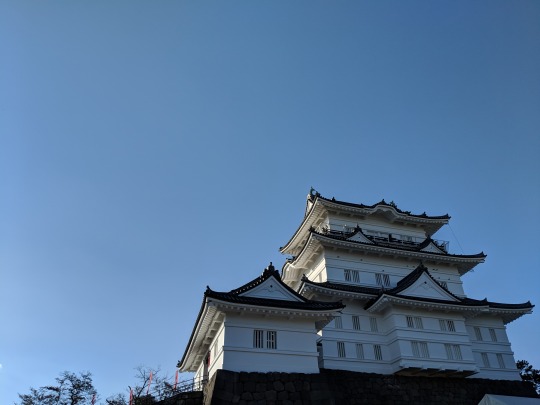
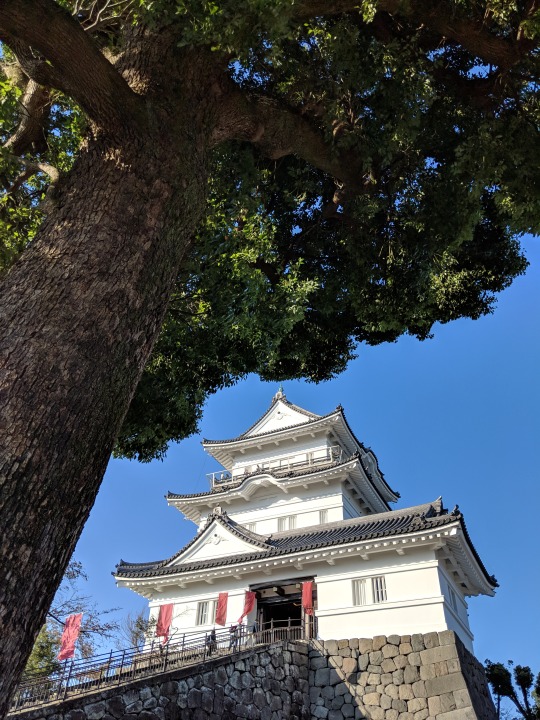
天守閣
小田原城天守閣
「天守」とはお城の象徴ともいえる建物で、お城の内外を見張るための物見櫓や蔵などとして用いられました。江戸時代までは「殿主」「殿守」などとも記され、「天守閣」と呼ばれるのは明治時代になってからのことです。江戸時代の小田原城は江戸の西を守る要の城とされ、徳川将軍家の宿所としても用いられました。寛永11年(1634)には、京都へと向かう途中の三代将軍徳川家光が天守に登り、武具を見たり展望を楽しんだりしたという記録が残っています。
元禄16年(1703)の大地震で、天守を含めた小田原城のほとんどの建物が倒壊・焼失しますが、天守は宝永2年(1705)に外観三層内部四階の「天守櫓」、入り口の「付櫓」、両者を結ぶ「続櫓」の三棟からなる櫓群として再建され、明治3年(1870)の廃城・解体までその姿を保ちました。
現在の天守閣は、昭和35年(1960)に市制20周年の記念事業として鉄筋コンクリート造で復興されたものです。復興に際しては、江戸時代の天守引図(設計図)や模型を参考に外観が復興され、最上階には周囲の景色を楽しめるように高欄が設けられました。
そして、平成28年(2016)には耐震改修工事と展示の全面的なリニューアルが行われました。天守閣内部では古文書や甲冑・刀剣、発掘調査による出土品などを展示し、小田原城の歴史を紹介しています。
標高約60メートルの位置にある最上階からは相模湾が一望でき、晴れた日には三浦半島や伊豆大島、遠く利島、房総半島までを望むことができます。
“Tenshukaku” means “Castle tower”, the symbolic structure of a Japanese castle.
This castle tower served as storehouse, watch tower, or others in Edo period. Having a role to protect the west of Edo, the capital of Japan, the Odawara Castle was a special castle that even the Tokugawa shogunate family stayed at. Although having been demolished during the Meiji period, it was restored in 1960.
Since a large-scale renewal completed in 2015, various historical materials such as armors, swords, etc. have been exhibited inside the structure.
From the topmost floor of the Castle tower, the superb view of the entire Sagami-wan Bay can be enjoyed.
[Chinese]
文久図(小田原城天守閣蔵)
文久年間(1861~1864)に作られたとされる絵図で、幕末期の天守の姿が描かれています。
天守閣入場料 Admission fee
個人 - person | 団体 - Group (more than 30 people)
大人 - (over 15 years old)
500円 (500 en) | 400円 (400 en)
小中学生 - Elementary/Junior high school student
200円 (200 en) | 160円 (160 en)
開館時間:AM9:00~PM5:00 (入館はPM4:30まで)
9:00A.M. - 5:00P.M. (Last admission 30 minutes before closing time)
Vocab
天守閣(てんしゅかく)castle tower, keep, donjon
天守(てんしゅ)castle tower
象徴(しょうちょう)symbol, emblem, representation
内外(ないがい)interior and exterior
見張る(みはる)to stand watch, guard
物見櫓(ものみやぐら)watch tower
用いる(もちいる)to use, make use of
殿主(でんす)(Buddhist) priest in charge of a temple’s clerical duties
殿守(とのもり)palace guard [same for 主殿(とのも)]
記する(きする)to remember, to note
とされる )…is considered to…
将軍家(しょうぐんけ)family positioned to accede the shogunate
宿所(しゅくしょ)address, lodgings, accomodations
途中(とちゅう)en route
徳川家光(とくがわいえみつ)Tokugawa Iemitsu
武具(ぶぐ)arms, weapons
展望(てんぼう)view, outlook
元禄(げんろく)Genroku era (9.30.1688-3.13.1704)
ほとんど almost all (of)
倒壊(とうかい)destruction, collapse
焼失(しょうしつ)destruction by fire, being burnt down
宝永(ほうえい)Hoei era (3.13.1704-4.25.1711)
外観(がいかん)outward appearance
付櫓(つけやぐら)attached turret/watchtower
両者(りょうしゃ)pair, two people, two things
続櫓(ぞくやぐら)a row house watchtower that continues from the gate watchtower)(櫓門)
棟(とう)counter for buildings
群(ぐん))group
廃城(はいじょう)abandoned castle
解体(かいたい)demolition, taking down
保つ(たもつ)to keep, preserve
市制(しせい)municipality
鉄筋コンクリート(てっきんコンクリート)reinforced concrete
復興(ふっこう)reconstruction, restoration
に際して(にさいして)at the time of, during
設計図(せっけいず)plan, blueprint
模型(もけい)model
最上階(さいじょうかい)top floor
高欄(こうらん)railing
設ける(もうける)to prepare, provide
耐震(たいしん)resistant to earthquakes
改修工事(かいしゅうこうじ)repair work
展示(てんじ)exhibition, display
全面的(ぜんめんてき)total, complete, extensive
古文書(こぶんしょ)historical document, archives
甲冑(かっちゅう)armor and helmet
刀剣(とうけん)sword
発掘(はっくつ)excavation
出土品(しゅつどひん)artefact, archaeological find
標高(ひょうこう)elevation
相模湾(さがみわん)Sagami Bay
一望(いちぼう)sweeping/unbroken view
三浦半島(みうらはんとう)Miura Peninsula
伊豆大島(いずおおしま)Izu Oshima
利島(としま)Toshima Island
房総半島(ぼうそうはんとう)Boso Peninsula
望む(のぞむ)to expect, hope for, look forward to
入場料(にゅうじょうりょう)admission fee
入館(にゅうかん)entrance (into a library, museum, etc.)
#日本語#japanese language#japanese langblr#japanese vocabulary#日本#japan#japanese history#日本歴史#odawara#小田原城#Odawara castle#小田原市#and with that I'm through with Odawara :D Pics from Tokyo will be next
17 notes
·
View notes
Photo
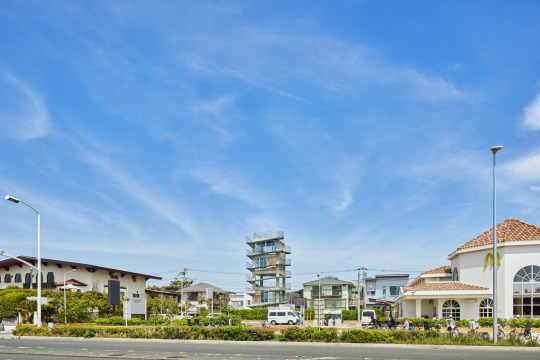

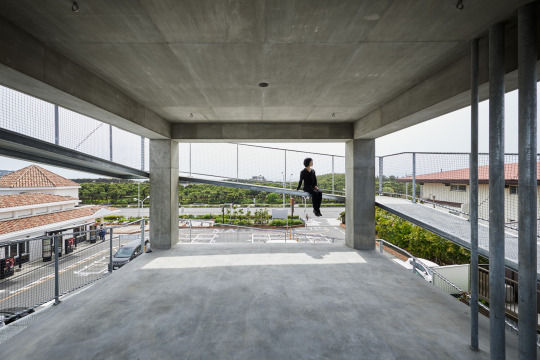
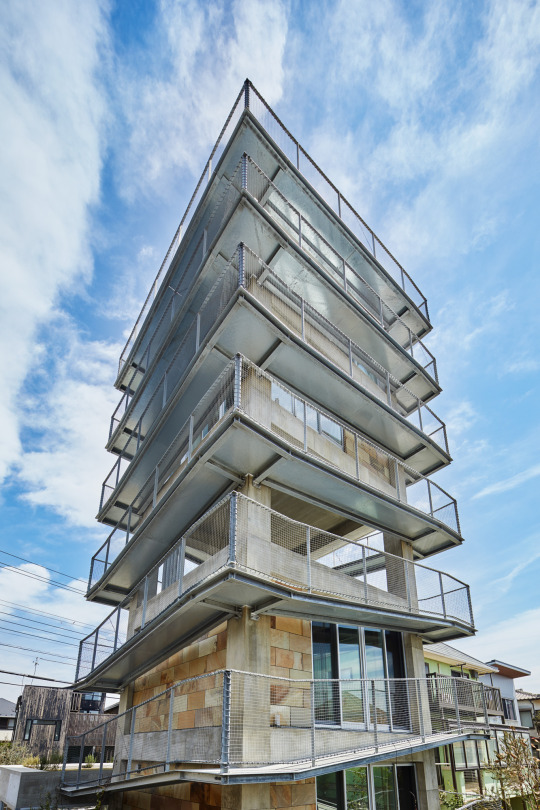
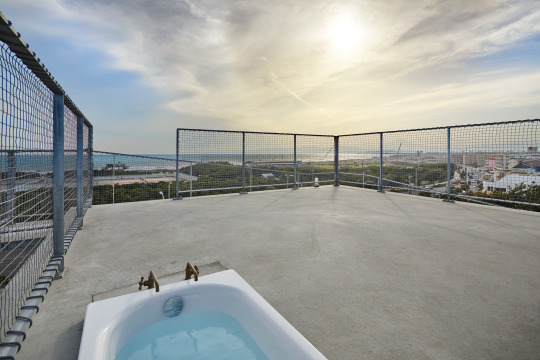

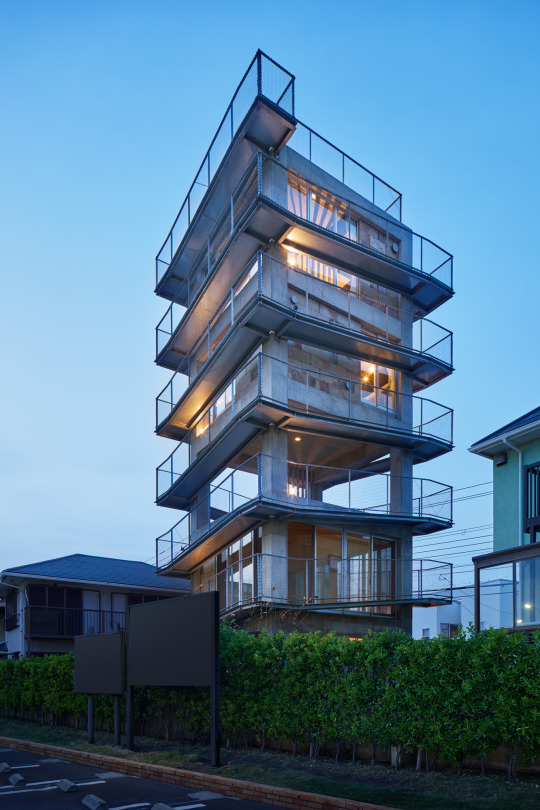

(建築設計事務所 可児公一植美雪から)
KUGENUMA-Y
敷地は湘南の海の近く、5層高さ15mのRCラーメンフレームが6層長さ150mの鉄骨スロープを纏った、単純な構成の住宅。
最初に施主から求められたのは高さが15mである事、そして何があってもその高さまで登れる事という2点だけだった。これには施主の大らかな生き方と、海の近くで生きてきた覚悟のようなものを感じた。この施主にとっての生きる事を具現化したような力強く、かつ軽やかで大らかな建築がふさわしいと考えた。同時に海に近いこの場所で、建築自身にも生き残っていける強かさが必要だとも感じた。
15mのラーメンフレームには溶融亜鉛メッキの施された鉄骨のスロープが巻きつく。エレベーターでもなく、階段でもない単純な坂道であるこのスロープは、どんな時でも必ず各層を経て15mの高さまで届けてくれる。また、この単純な坂道は様々な別の意味でも捉えられる。
外部に生み出す拡張空間は上層階でありながら、全ての開口部で掃き出し窓を可能とし、上層での複雑な内外の繋がりを生み出す。それは拡張する床であり、日射を遮る庇であり、安全のための手すりであり、地上からの視線を遮る目隠しとなる。
また、天井高の高い1,2層、壁のない3層、トンネルのような4層、東屋のような5層、均質な5層のフレームの中の質の異なる空間に対して、均質な6層のスロープが少しずつずれながら絡みついてくる事で均質なルールの中に小さな歪みを生み出す。同時に、このスロープは住人が建物の隅々までを自分の目で見る事を可能としている。
通常、高さ15mの建物の外壁は近くで見る事が出来ず、知らず知らず劣化し建物の寿命を縮めていくが、ここでは常に目線の高さにあり、日常的な確認ができる。メンテナンス工事の際には、高さのある建物は足場も高くなり大きなコストとなるが、ここではスロープが足場となる。住人の生きる事が同時に建築を生かす、そんな単純で複雑な建築を目指している。
建築敷地 : 神奈川県
竣工年月 : 2018年3月
工事種別 : 新築
主要用途 : 専用住宅
主要構造 : 鉄筋コンクリート造 地上4階
敷地面積 : 185.67m2
建築面積 : 69.04m2
延床面積 : 102.89m2
構造設計 : 鈴木啓/ASA 担当 : 木村洋介 長谷川理男
施工会社 : 大同工業 担当 : 川上冬樹
写真撮影 : 藤井浩司/ナカサアンドパートナーズ
- - - - - - - - - - - - - - - -
via
増井 俊之 - 江ノ島のマクドの隣にあるこの建物がすごく不思議なのだが...... | Facebook
9 notes
·
View notes
Photo

遠方に建物見学へ。続 綺麗な壁を背景に、高天井からスッと ペンダントライトを落とします。 窓を考えるときは、綺麗な四角い箱に、 穴を開けていくように考えます。 光や景観、外とのつながりなど、 しっかり意味のあるところに必要な分 で計画します。 @mui_okinawa 気になる点や質問があれば、気軽にコメント DMお願いします! よかったらフォローもお願いします。 #マイホーム #マイホーム計画 #注文住宅 #暮らしのアイデア #左官壁 #木の床 #杉の床材 #ペンダント照明 #ペンダントライト #裸電球 #吹き抜け照明 #経年変化を楽しむ #経年美化 #コンクリート造 #ミニマルデザイン #暮らしの工夫 #設計アイデア #沖縄ホテル #mui #okinawahotels #okinawa #hotels https://www.instagram.com/p/Cg4a6DlvV3Z/?igshid=NGJjMDIxMWI=
#マイホーム#マイホーム計画#注文住宅#暮らしのアイデア#左官壁#木の床#杉の床材#ペンダント照明#ペンダントライト#裸電球#吹き抜け照明#経年変化を楽しむ#経年美化#コンクリート造#ミニマルデザイン#暮らしの工夫#設計アイデア#沖縄ホテル#mui#okinawahotels#okinawa#hotels
0 notes
Text
ホワイエI・T 3B号
嬉しいペット可物件になります!対面キッチンと7帖のロフト付になってます♪モニター付インターホンが設備されているので防犯対策ばっちり!赤十字病院目の前、県立看護大学も近い物件になります★
家賃 4.3万円
共益費 2,000円
敷金/礼金 ナシ
��介手数料 4.73万円
保証金 ナシ
間取り 1LDK ( 洋7 LDK11 ※※洋7帖はロフト部分になります。)
所在階/階数 3階 (3階建)
ペット 可 ※猫1匹のみ
専有面積 33m² / 9.98坪
契約時に、退去時清掃代¥30,000・賃貸入居者総合保険(火災等:1年契約)¥9,700・ペット保証金¥30,000(飼育する場合)
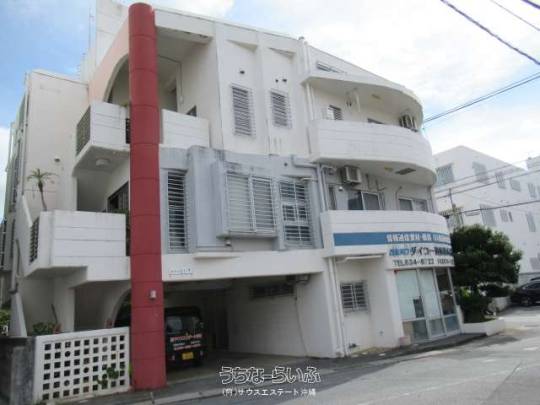
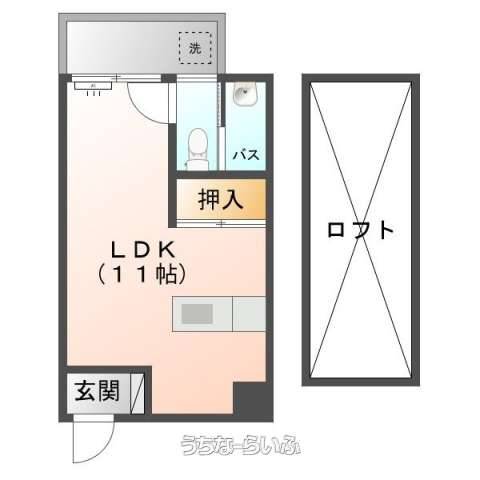
有限会社スタプランニング
TEL 098-855-0655 赤嶺まで… ♪
お気軽にお問い合わせ下さい。・・・(^_-)-☆
2 notes
·
View notes
Text
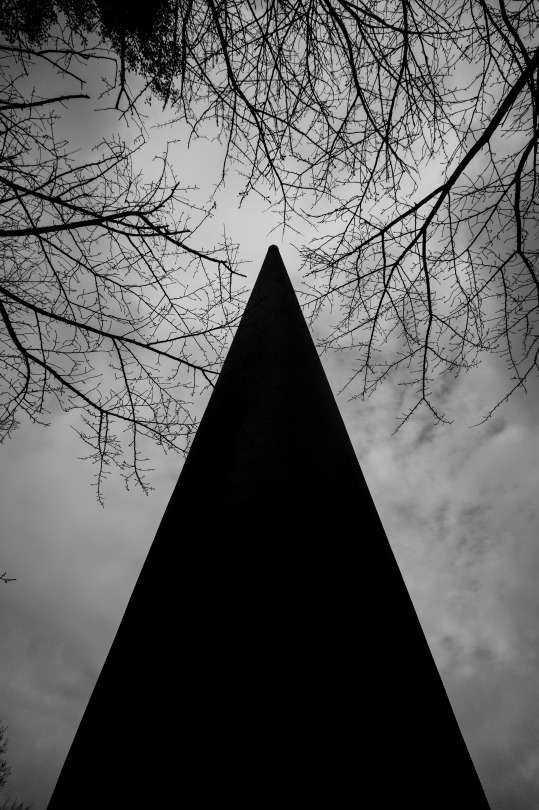

旧佐世保無線電信所(針尾送信所)
1918〜1922年に掛けて旧日本海軍が建造したらしい。
100年以上も前!
鉄筋コンクリート造で高さ136m。
基部の直径は約12m。
当時の主流であった長波通信に使用されたが、
割とすぐにその長波通信自体が陳腐化し、
第二次大戦中には中短波通信が主流となったので
ほんとに活躍してた時期は僅からしい。
12 notes
·
View notes
Photo
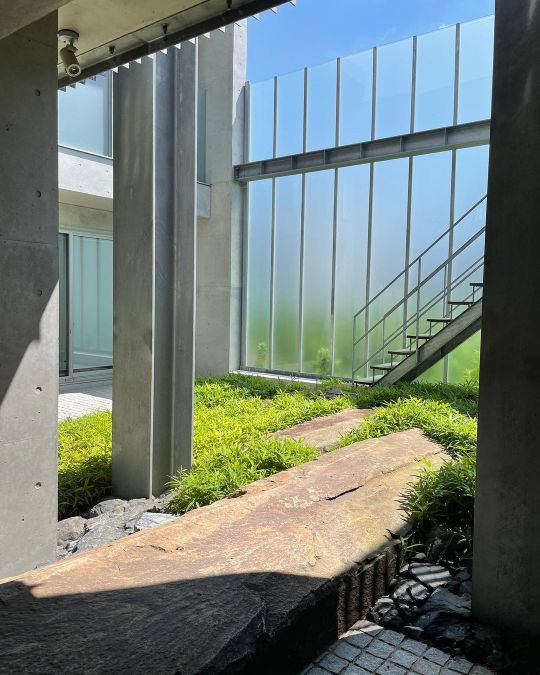
#石 #自然石 #巨岩 #ランドスケープ #ランドスケープデザイン #外構 #外構デザイン #鉄筋コンクリート造 #ガラス #スチール #住宅デザイン #家 #建築 #新潟 #設計 #設計事務所 #デザイン #デザインルームアマノ #髙木英寿 #株式会社吉田建設 #architect #architecture #landscape #landscapedesign #garden #design #designroomamano #takagihidehisa #dra #niigata (Niigata-City Japan) https://www.instagram.com/p/Cf2FG-PBBRy/?igshid=NGJjMDIxMWI=
#石#自然石#巨岩#ランドスケープ#ランドスケープデザイン#外構#外構デザイン#鉄筋コンクリート造#ガラス#スチール#住宅デザイン#家#建築#新潟#設計#設計事務所#デザイン#デザインルームアマノ#髙木英寿#株式会社吉田建設#architect#architecture#landscape#landscapedesign#garden#design#designroomamano#takagihidehisa#dra#niigata
0 notes
Photo
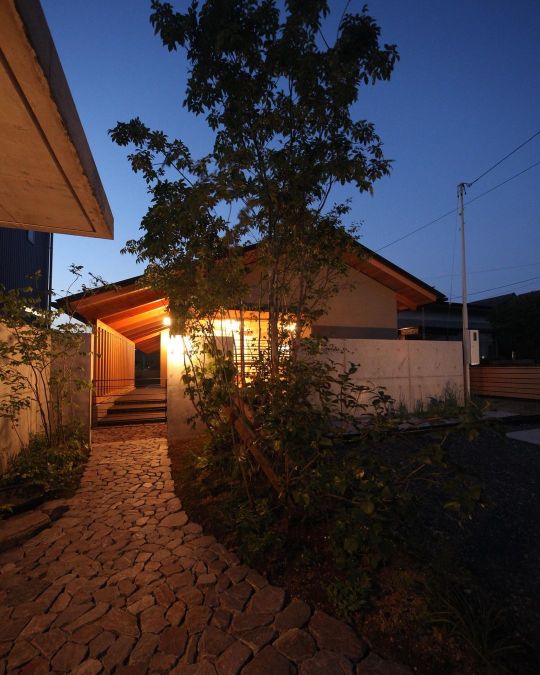
おはようございます。 和田の家|愛知県江南市 石畳のアプローチ夕景です。奥の軒下にある長い玄関ポーチへと誘います。 #アプローチ #造園 #石畳 #小道 #平屋 #コンクリート打放し #左官塗り壁 #江南市 #青木昌則建築研究所 https://www.instagram.com/p/CfkRfcRvwtq/?igshid=NGJjMDIxMWI=
0 notes